The West Mesa Murders - A Dreaded Mass Grave
The desolate West Mesa of Albuquerque, New Mexico, became a grim excavation site in 2009 when a chance discovery unearthed the remains of eleven murdered women. The unsettling unsolved cases continue to haunt the city of Albuquerque to this day.
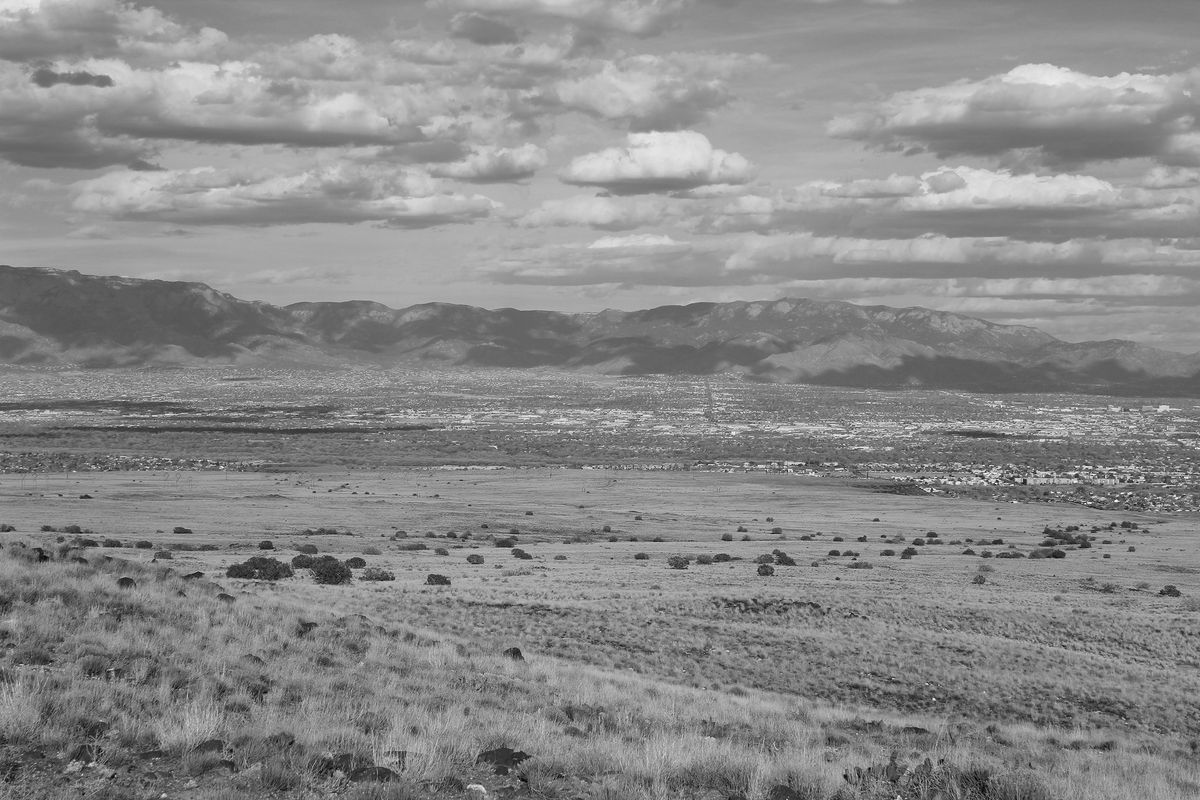
*Warning: This article entails potentially upsetting content.*
West Mesa, Albuquerque.
The barren flatland of the West Mesa region in Albuquerque, New Mexico, is limitless in its vast landscape. A sprawling desert on the outskirts of Southwest Albuquerque bordered by State Road 45 and Interstate Highway 40, the intersection of 118th Street and Dennis Chavez Boulevard became the site of a tragic account unprecedented to the State of New Mexico. It was a grim unearthing for a series of unsolved murders casting grief across the state, shocking communities, and triggering changes in structuring investigative departments and agencies.
The canvas revealed a patchwork of broken lives concerning the disappearances of multiple women between 2001 and 2006.
The economic collapse of 2009 had already devastated many dreams as the unemployment rate in Albuquerque soared, hitting the predominantly working-class Hispanic community of West Mesa, and with scarce opportunities, desperation mounted. Many residents, particularly women, resorted to risky and unstable forms of work, like sex work or informal labor, exposing them to increased susceptibility to be targeted by crimes already on the rise.
On February 2nd, 2009, a woman from Albuquerque had been walking her dog when she stumbled upon a large bone protruding from the trail. It seemed large enough to be of a human, so she snapped a photo of it and texted it to her sister, who was a registered nurse. Soon, her sister replied and told her that the bone resembled a human femur. The woman alerted the Albuquerque Police Department right away.

When the investigators confirmed that the bone was human, there followed days of massive excavation using heavy machinery and cadaver dogs.
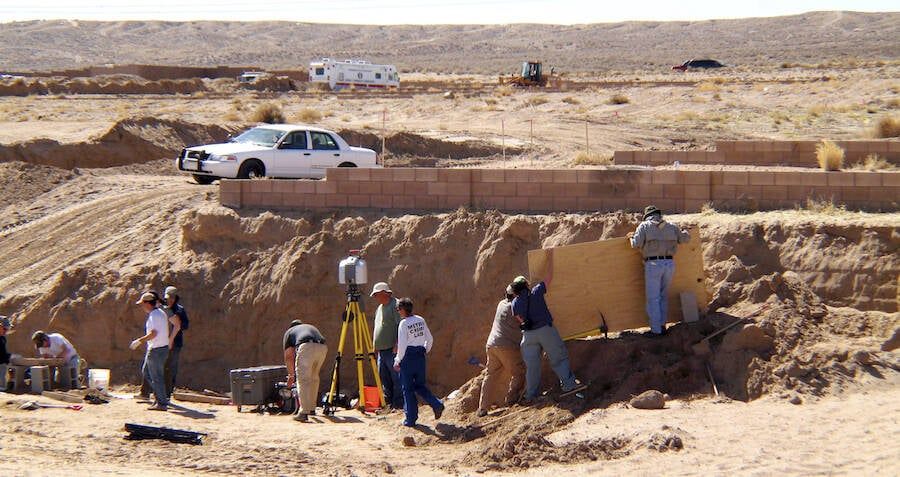
In the following weeks, the investigators uncovered the skeletal remains of 11 women and one unborn child, all buried in makeshift graves, believed to be the work of a serial killer, to be dubbed the West Mesa bone collector.
The murders defined a killing ground across a 92-acre property. The land owned by a home developer operated as a landfill for building waste and debris. The soil was already graded, leveled, and disturbed; which made it difficult for the exhumation to distinguish human remains from other materials.
Identifying the West Mesa victims required a range of forensic techniques demanding more than just genetic blueprints. A victim story can sometimes be etched in bones, deciphered by anthropological methods, reconstructing lives from fragmented remains, piecing together their previous backgrounds, and tracing potential locations to glean clues about the victims' final moments.
The Medical Examiners identified the eleven victims, most of whom were Hispanic females. The police used satellite footage to determine when the graves indicated disturbance of potential digging and tire tracks near the burial sites from 2003 to 2005.
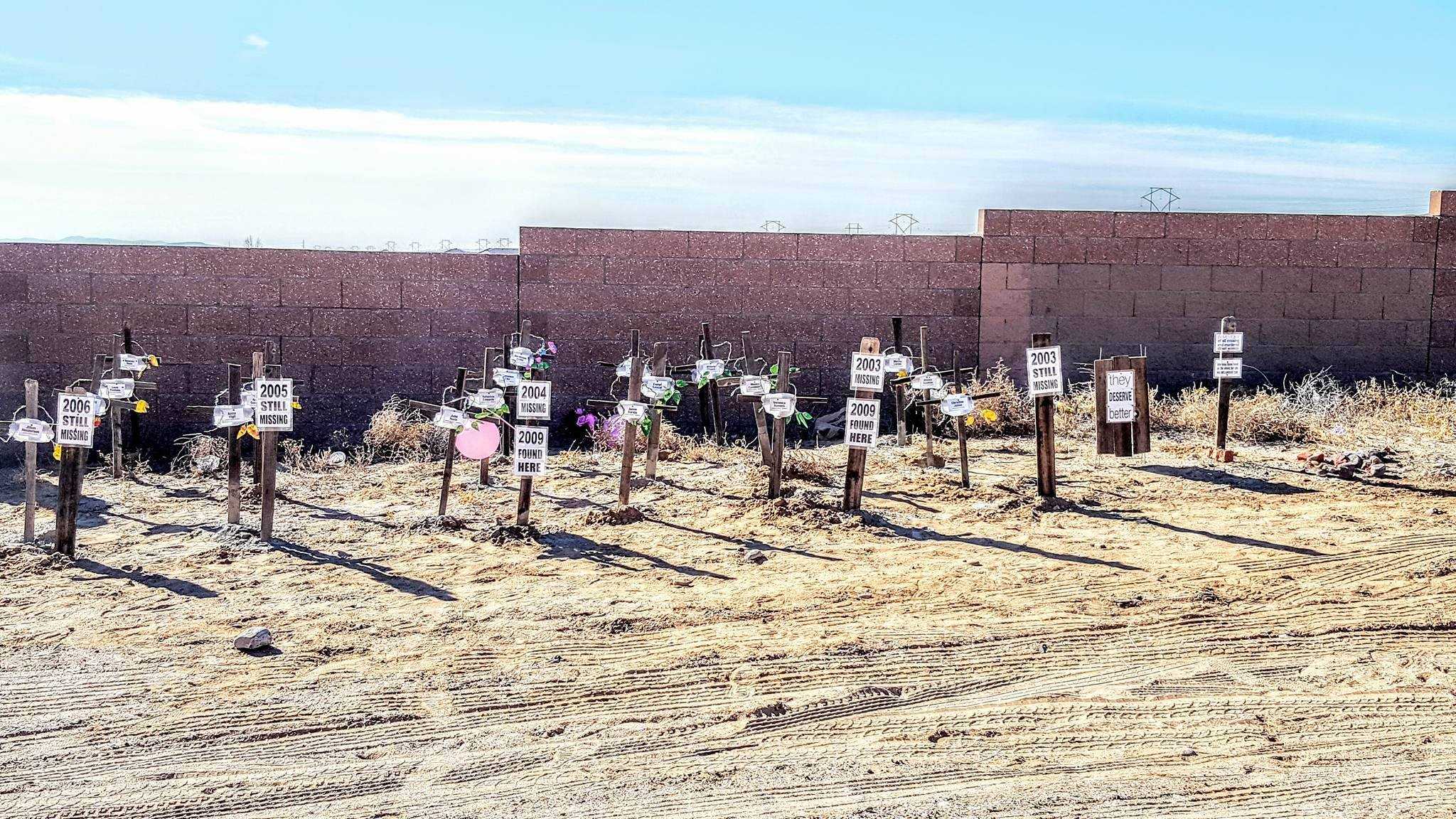
On a run-down stretch of Route 66, Central Avenue is infamous for its low-rent hotels, abundance of drugs, and nocturnal clients looking for sexual services, their stories woven together by trauma and poverty. Albuquerque Detective Ida Lopez devoted her career to uncovering the truth behind their disappearances. Since the detective started working on the case in August 2005, the files of several missing women connected her to more women from the streets of Albuquerque holding the same profile. By 2007, the former Detective for the Albuquerque Police Department linked a pattern of at least 18 women with similar backgrounds who vanished between 2001 and 2006. Two years later, the string of disappearances came to light upon the mass grave uncovering.
Following retirement, Investigator Ida Lopez and APD homicide Sgt. Elizabeth Thomson Sgt. Elizabeth Thomson still works the case on a contractual basis to examine the West Mesa murders and other unsolved disappearances in the Metro area, compelled by the duty of bringing justice for the victims and a compiled list of the still eight unsolved missing women cases potentially connected to the same suspect.
The Victims "by Date of Disappearance"
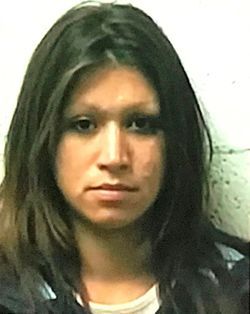
Born on the 20th of June, 1981, 22-year-old Monica Diane Candelaria from Albuquerque was reported missing by her family on May 15th, 2003, after vanishing for three days. She was last seen near Route 66 by Atrisco and Central in Albuquerque. Her mother, Isabel Candelaria, reported to a Bernalillo County Sheriff's detective that soon after her daughter went missing, rumors began circulating in the neighborhood about her daughter's death.
The investigators discovered a human jawbone near the location, not belonging to Monica. The cold case unit took over the case.
Candelaria grappled with personal struggles during a vulnerable time, including the heartbreaking loss of a daughter during birth. And when, unfortunately, her life was cut short at the age of 22, she left behind a young son.
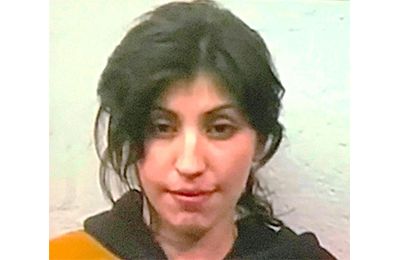
Born on the 19th of June, 1976, 27-year-old Veronica C. Romero, a mother of five children, was last seen getting into a white truck at the intersection of Wyoming Boulevard and Central Avenue. Romero’s family reported her missing on February 14th, 2004.
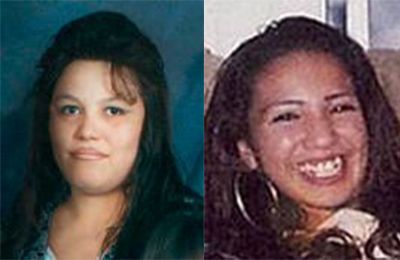
Born on the 27th of November, 1978, and 28th of September, 1988, 25-year-old Evelyn Jesus Maria Salazar and her cousin, 15-year-old Jamie Yvonne Catalina Barela, were last seen at a family barbecue gathering in April 2004. They had left the gathering to go to a park near San Mateo and Gibson SE and were supposed to return within an hour, but unfortunately, they were never seen again.
Evelyn was reportedly involved in drugs, however, her disappearance was unrelated to her use.
Barela was just 15 years old at the time of her disappearance. She was a victim of opportunity for a predator and had no connections to drugs or sex work.

Born on the 26th of November, 1987, 15-year-old Syllannia Terene Edwards of Harris County was reported missing from Lawton, Oklahoma, in August 2003.
She is the only non-Hispanic victim of the West Mesa Murders.
Law enforcement authorities in Lawton had classified her as an endangered runaway when she went missing from her Fostercare home.
A victim of unfortunate circumstances, at two years old, her mother was serving a life sentence for a murder charge and believed that her father and brother were also in and out of prison. Edward spent her life in the foster care system.
In 2003, she had been staying at the Parker Pointe home, a group home for victims of abuse and neglect.
The investigators speculated that Edward was a victim of human trafficking, coerced into sex work.
In May of 2004, Edward had been seen around East Colfax Avenue in Aurora, Colorado, associating with prostitutes. She may have been staying at the Ranger Motel.
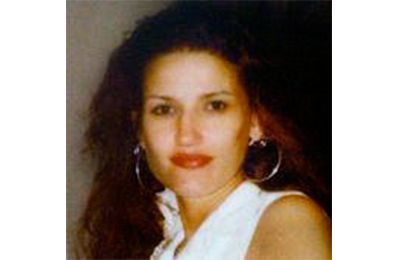
Born on the 24th of October, 1972, 32-year-old Cinnamon Elks was a young mother of two children and the oldest of all victims. Her transient lifestyle and experience with drugs during her teenage years escalated when she became a mother struggling to take care of her children. She was arrested many times and disappeared after her last arrest in July 2004.
Similar to the other victims, Cinnamon relied heavily on her family for money, but she gradually stopped visiting them. Her family soon noticed her disappearance and worried about her fate. Her mother reported her missing in August 2004, but many months would pass before the filing of her case in December. The investigation was so slow that they made no progress.
Her mother, Diana Wilhelm, reported having heard rumors shortly before her August 2004 disappearance that “a dirty cop was chopping off the heads of prostitutes and burying them on the West Mesa,” according to Joline Gutierrez-Krueger of the Albuquerque Journal.
Elk's family sent her dental records to the police in case they needed to identify her remains.

Born on the 28th of August, 1980, 24-year-old Juliean Cyndie Nieto, also known as Julie, was last seen by her family in August of 2004 and was soon after reported. She was a young mother and the fourth victim to be identified.
Nieto's dependency on drugs and work in prostitution got her convicted several times, despite many attempts to turn her life around for her son whom she dearly loved and cared for, she struggled to make it work, and shortly after, she unfortunately disappeared.
Her disappearance had devastated the lives of her loved ones; when two years after her disappearance, spiraling into depression, her sister and best friend died from a drug overdose in an Albuquerque motel.
Heartbroken, their families will remember them as the devoted and kind daughters they were, who will forever be missed.

Born on the 7th of August, 1981, 24-year-old Virginia Ann Cloven of Albuquerque was reported missing in 2004, also shaped by a series of heart-wrenching events. It all began with the loss of her brother, Robert Cloven, Jr., who was fatally shot. Elizabeth Cloven, Virginia's mother, bore the weight of worry as they searched for their missing daughter. She confided to KOAT ALBUQUERQUE, revealing how this tragedy tore their family apart. Virginia's life took another devastating turn when she moved in with her boyfriend. Their shared dreams crumbled when her boyfriend was struck by a car, ending in a coma. Losing their home, Virginia wandered from one place to another out on her own, moving around and staying with friends. Eventually, it led to a life of drug use, according to the family.
The once-regular phone calls home ceased abruptly in October 2004. Tragically, Virginia would later be positively identified as one of the victims.
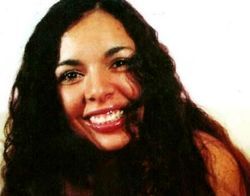
Born on the 31st of August, 1976, 27-year-old Doreen Marquez of Albuquerque was last seen in October 2003, near Calvary Christian Academy, dropping her child off to school. Another possible sighting was reported by a friend seeing her walking in the Barelas neighborhood of Albuquerque.
She left behind two daughters and a sister, who reported that Doreen had only been involved with drugs in the last year of her life and that she had no arrests for prostitution.
Doreen attended West Mesa High School, where she was a cheerleader.
But when her boyfriend went to prison, she managed the stress of being the only parent with the use of drugs, and in return, Doreen had a change in character. When she lost her apartment, she refused help from her family after they expressed their concern about her use. Doreen ended up kicked out of her sister's home when her drug use became a problem, with the condition of return getting clean, but unfortunately, her family wouldn't see her again
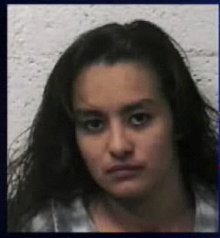
24-year-old Victoria Ann Grace Chavez of Albuquerque disappeared on June 5th, 2003. Victoria was a mother of two.
She had a history of drug-related incidents and was involved in prostitution. It wasn't unusual for Victoria to disappear for a long time. Victoria's mother, Mary Gutierrez, grew concerned when she reported her daughter Victoria Chavez missing in March 2005.
In 2009, her remains were found intact in a grave 18 inches deep and identified through dental records provided by the family.
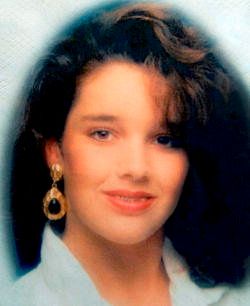
Born on the 1st of August 1982, 22-year-old Gina Michelle Valdez of Albuquerque was a mother when she disappeared sometime between 2004 and 2005. She aspired to turn her life around, but unfortunately, it was too late. Her family reported her missing in February 2005 and were distraught by rumors circulating regarding their daughter being murdered and disposed of in the area specified as located adjacent to 118th Street SW in Albuquerque.
In 2009, Valdez was identified as one of the victims found at the site.
And the heartbreak grew as Michelle was pregnant at the time of her death. But her family has taken comfort in laying her to rest in peace and will forever remember her dearly as an angel survived by her daughter.
Most of the women listed by Ida Lopez as missing sex workers were victims in the West Mesa Murders. However, six were not. Felipa Gonzales, Nina Herron, Leah Peebles, Darlene Trujillo, Anna Vigil, and Shawntell Waites all vanished from 2001 to 2005 when they were in their twenties. Today, they would all be in their thirties or early forties.
The site where the bodies were found is now a memorial park.
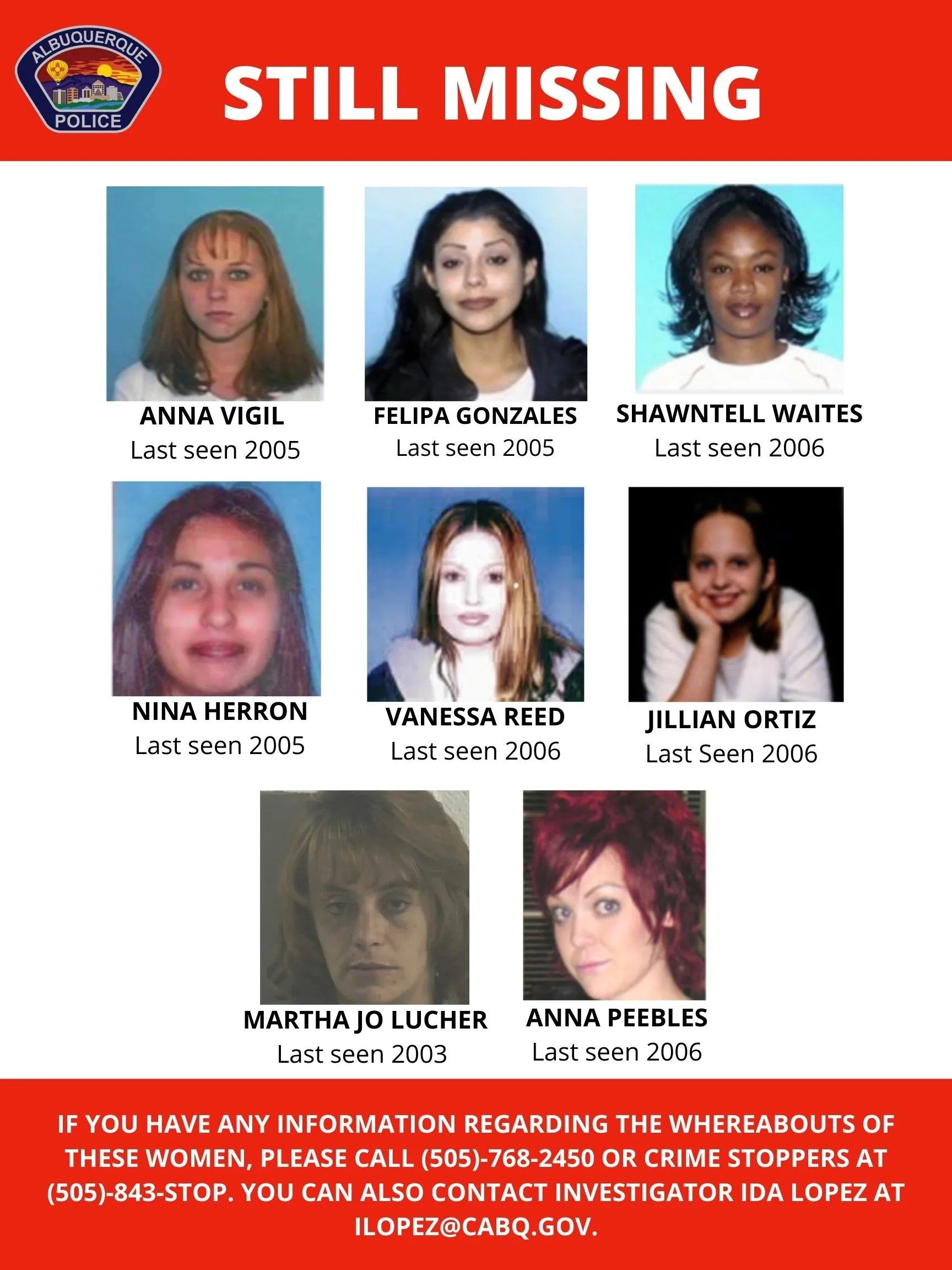
Beneath the exterior of a man, perhaps in his 30s or 40s, was a dark facet of vengeance shrouded in secrecy and hatred towards women speaking of a past traversed with domestic violence and sexual abuse.
This individual had an undetected compulsive familiarity with the terrain, indicating a level of comfort within the area, potentially meaning the killer resided nearby. Although the group burial suggests some pattern of disorganization, his possible fixation on the location for such an extended period suggested attentive planning to avoid detection.
There exists a possibility that the killer may have had an accomplice or may have been part of a larger group. Some of the victims had been seen with different men before they vanished, and some of the bodies might have been moved or reburied after their initial burial. Which prompted the authorities to consider the possibility of a sex trafficking ring operating through neighboring Texas. This ring may have targeted prostitutes during events throughout the Southwest, Southern, and Western United States, especially during regularly scheduled events like the New Mexico State Fair. Luring the victims with promises of money, drugs, or protection and then killing them after using them.
The West Mesa murders stopped abruptly in 2005, coinciding with the "Mesa Sting" police operation that cracked down on prostitution and drug trafficking in the area, probably deterring the killer altogether. But there is always the possibility of their own death or perhaps an unknown conviction.
The truth remains untold, and the gathered evidence remains insufficient to call any of the following persons of interest as suspects.
Persons of Interest
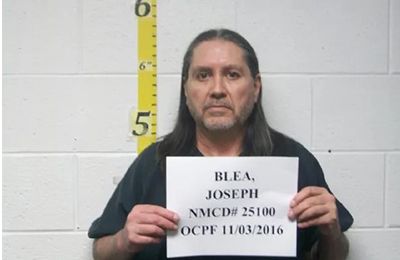
Joseph Blea is a convicted rapist, dubbed the "Mid-School Rapist" for his activities in the 1980s when he would break into the homes of teenage girls near McKinley Middle School in Albuquerque and sexually assault them. After the police uncovered the grave site on West Mesa, April Gillen, Blea's former wife, contacted the police and pointed toward her ex-husband, Joseph Blea.
A search warrant affidavit revealed that police had run across Blea more than 130 times between 1990 and 2009 in the East Central corridor – the same area where most of the West Mesa victims were last seen.
The police monitored Blea for days, suspecting him of stalking prostitutes along Central Avenue. However, no concrete, incriminating evidence could be pinned against him at the time, despite a search of his home revealing women's jewelry, underwear, and crime articles his family didn't recognize.
The link against Blea includes his DNA found on the jeans of a prostitute who was killed and dumped off East Central Avenue in the late 1980s. He also allegedly confessed to a cellmate that he had hired the victims of the West Mesa murders. According to DGOmag, the only piece of evidence that the APD says may connect Blea to the murders is a plant tag for a Spearmint juniper found near Virginia Cloven's buried remains. The plant tag found near a victim led to a California nursery that also supplied nurseries in Albuquerque. Blea's landscaping business records showed purchases from these Albuquerque nurseries.
Blea was a monster, as marked by law enforcement officials, having been accused of multiple rapes in the 1980s and 90s, particularly near McKinley Middle School. His modus operandi involved wearing a ski mask and often carrying a knife. He targeted dozens of teenage girls during this period. Joseph Blea was convicted in a rape case. He assaulted a young girl 26 years ago when she was an eighth grader. The masked attack occurred in her home after school. A rape kit was collected in 1988. Upon testing in 2010, it led investigators to Blea. He was convicted of the crime in 2015. And he pled no contest when charged with the rapes of two women and another child that occurred between 1990 and 1993.
The case for charging Blea as the West Mesa Bone Collector never materialized, but fortunately, evidence of other crimes did. He denies any involvement in the killings. By 2015, Blea was incarcerated at the Metropolitan Detention Center, awaiting trials on nine counts of sexual assault against a child under 13 years old and four counts of kidnapping. Blea is currently serving a 90-year sentence for sexual assaults unrelated to the West Mesa case.
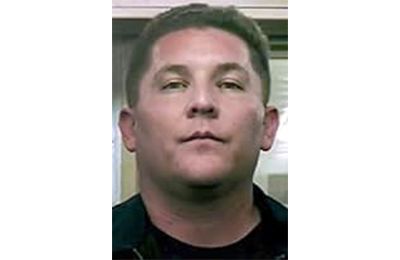
Within a two-mile radius of the West Mesa burial site resided a printing company employee nearing his forties, Lorenzo Matthew Montoya.
On the 19th of December, 2006, 19-year-old Shericka Hill connected with Lorenzo Montoya through an online chat room and agreed to meet in person. During their encounter, Hill and Montoya arranged for her to visit his mobile home at South Valley on 4000 Blake Road S.W. to perform a dance for him. Hill's boyfriend, Frederick Williams, drove her to Montoya's house and remained in the car while Hill went inside.
After an hour of waiting; Williams grew concerned and decided to check on Hill, bringing his gun. Outside the home, he encountered Montoya, who also had a gun. Feeling threatened, Williams shot Montoya dead. When Williams entered the residence, he found Hill's lifeless body. She was bound with duct tape and had been strangled. It appeared that Montoya was attempting to move her body to his car.
Authorities did not charge Williams in Montoya's death.
Montoya was previously charged in 1999 under suspicion of raping a 23-year-old prostitute. She reported having been choked by Montoya in an attempt to kill her. The case was later dismissed in metropolitan Court and never refiled. Montoya had also been arrested on suspicion of patronizing prostitutes in 1998 and 2005. Weirdly, prior prostitution and rape charges against Montoya had been dropped. One year before Shericka Hill's incident, in 2006, there were alleged tire tracks connecting Montoya's trailer to the burial site of the West Mesa victims.
Lou Fred Reynolds of Albuquerque was a man allegedly reported by the police to be a pimp, according to El Paso Times. Information is scarce regarding his involvement. Some sources claim he owned an escort company called Have Mercy Escorts.
Police possibly found pictures of several West Mesa victims at his home, reportedly, including photos of Doreen Marquez. But no physical evidence linked him to the murder. Reynolds was allegedly arrested in 2001 and in 1998 on suspicion of promoting prostitution. Reynolds died of natural causes on the 2nd of January, 2009.
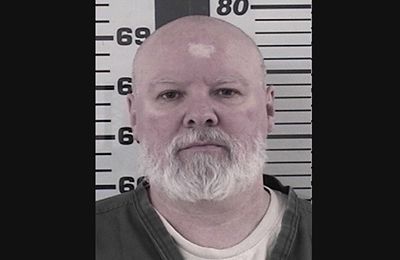
Scott Lee Kimball was a convicted serial killer, con man, and fraudster from Boulder County, Colorado. Over two years, he murdered at least four people. Kimball was sentenced in October 2009 to 70 years in prison after pleading guilty to the killing of four people in Colorado between 2003 and 2004. Investigators suspect his involvement in as many as 21 other unsolved killings. His criminal career intertwined with his role as an informant for the FBI, which paid him and shielded him from justice for some of his fraudulent schemes. Unfortunately, most of the information he provided to the bureau proved useless, and some were even false, leading to embarrassment for the agency. Kimball's troubled past included sexual abuse during his teens, which fueled a life of crime. As a skilled forger, he ran a legitimate business while primarily enriching himself through bad checks and forged documents. These white-collar crimes facilitated his murders, allowing him to create evidence that his victims were still alive after he had killed them. Shockingly, two of his victims were close to him: his uncle and the daughter of his third wife. His second wife, who bore his two sons, accused him of kidnapping and rape. Despite an open arrest warrant for the second assault, the FBI hired him as an informant. Eventually, an investigation into a check fraud scheme led to the discovery of the murders, and Kimball faced charges for both his crimes and his fraudulent activities.
A relative told reporters that authorities, who suspect him in more deaths, were also looking at him for possible links to the West Mesa murders in Albuquerque. Kimball traveled frequently across several states, and police are trying to construct a timeline for his activities in those places. He denied killing any of the women in New Mexico.
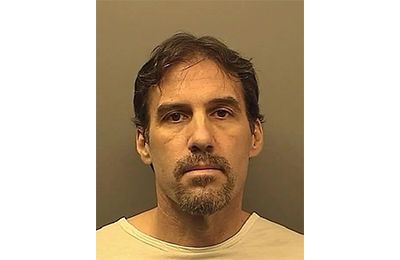
Robert Howard Bruce, infamously known as the "Ether Man," was a was a serial rapist whose heinous crimes spanned multiple states. His modus operandi involved using chemical-soaked rags to disable his female victims. The chilling details of his offenses unfolded across Colorado, New Mexico, Texas, and beyond. Bruce was sentenced in 2013 to 177 years in prison by an Oklahoma court for sex-related offenses that occurred in Norman, Oklahoma., between 1985 and 2001. Police said he used chloroform and stun guns to incapacitate his female victims. Through DNA and other evidence, he was connected to rapes in Albuquerque, N.M., as well as in Colorado and Texas. For his attacks in New Mexico, he was sentenced to 156 years in prison. Bruce has not been connected to any homicides.
Joylynn Martinez, a single mother, unwittingly married Bruce in 2001. Initially, he appeared as her prince charming, showering her with gifts and affection. However, their marriage took a dark turn. Bruce became controlling and derogatory toward women. Joy discovered a horrifying video of him having sex with her while she was unconscious. Alarmed, she noticed that the timeline of the sexual crimes matched Bruce's movements. When reports surfaced about the "Ether Man," Joylynn's suspicions intensified. Joy alerted that the timeline of the sexual crimes coincided with the traveling of her husband. The rapes in Albuquerque had started when Bruce had moved to the area and ended as he left. She alerted investigators, leading to Bruce's arrest. DNA evidence tied him to the crimes.
In 2011, Robert Howard Bruce received a 64-year sentence for attempted murder when he tried to blow up a police officer's home and an additional 333 years for his various sex attacks.

In connection to the West Mesa killings, there was lastly one person of interest who came under scrutiny, a local photographer and businessman from Joplin, Missouri, Ron Erwin.
Although there was no specific reason publicly given for Erwin being a suspect, Erwin was known to frequently visit the state fair held near the burial site in Albuquerque, which added to the suspicion.
In August 2010, armed with search warrants, FBI agents and Albuquerque police officers searched his properties and confiscated tens of thousands of pictures from him; the police found no evidence linking Erwin to the murders.
Erwin told the Joplin Globe he didn't know how he became a suspect in the case. Though he was never formally charged with the murders, Ron Erwin spent significant time trying to prove his innocence behind the scenes.
Erwin's attorneys provided a copy of an Albuquerque police report concluding that Ron Erwin is not a viable suspect.
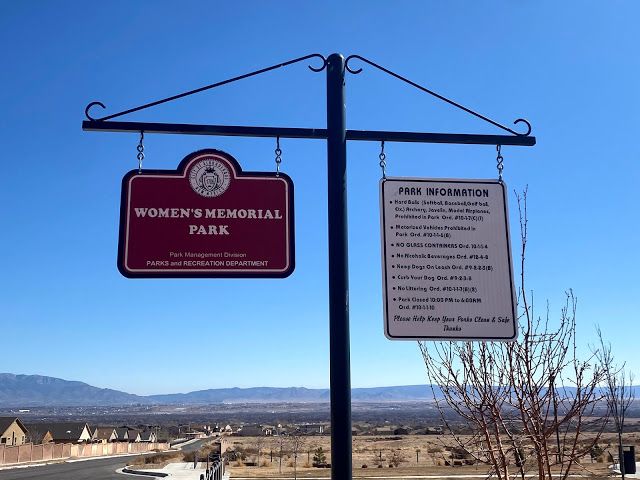
Authorities are offering a reward of up to $100,000 for information leading to the arrest and conviction of the person or persons responsible for this crime. If you have any relevant details concerning the victims or potential suspects, contact the 118th Street Task Force at 1-877-765-8273 or 505-768-2450/ Crime Stoppers can be called at 505-843-STOP.
You may also email information to Investigator Ida Lopez at ilopez@cabq.gov.
West Mesa Homicide Investigation — City of Albuquerque (cabq.gov)
Top 10 Facts About the West Mesa Murders - Discover Walks Blog
abqjournal.com/community-data/west-mesa-murder-victims
The West Mesa Memorial – Las Desaparecidas
No quit in the hunt for West Mesa killer | Local News | abqjournal.com
Police 'persons of interest' in Albuquerque serial murders investigation (elpasotimes.com)
West Mesa Bone Collector (Part One: The Pit) — Unresolved
Who's Murdering the Prostitutes of Albuquerque? (thedailybeast.com)
Accused serial rapist, West Mesa murder suspect sentenced to 36 years in rape case (krqe.com)
Serial rapist Robert Howard Bruce dubbed 'Ether Man' - spotlight (dailycrime.com)
Colorado Inmate Dubbed 'Ether Man' Gets 156 Years For NM Rapes - CBS Colorado (cbsnews.com)
